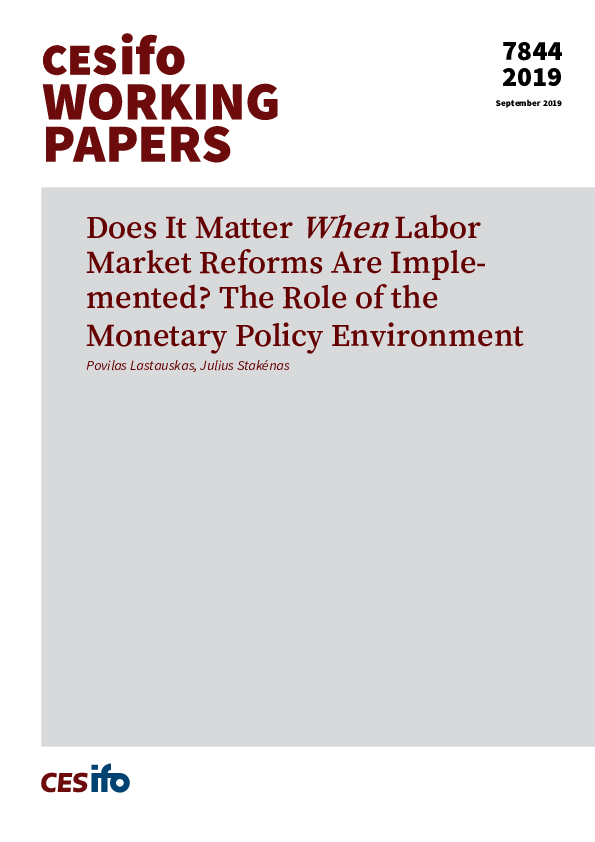Does It Matter When Labor Market Reforms Are Implemented? The Role of the Monetary Policy Environment
CESifo, Munich, 2019
CESifo Working Paper No. 7844

Do labor market reforms initiated in periods of loose monetary policy yield different outcomes from those that were introduced in periods when monetary tightening prevailed? Since economic theory usually pays attention to the steady state change and ignores business cycle interactions of structural reforms, we connect local projection methodology with the Mallow’s Cp averaging criterion to arrive at an inference that does not require knowledge of the exact functional form, is robust to mis-specification, admits non-linearities, and cross-sectional dependence and addresses uncertainty regarding interactions between labor reforms and macroeconomy. We also develop a test to check the importance of monetary policy for any horizon and the entire impulse response function, taking the multiple testing problem into account. We document that replacement rates deliver substantially different outcomes on real GDP, inflation and real effective exchange rate, whereas labor activation schemes bear different effects on unemployment in low- and high-interest rate environments. There is also evidence of monetary policy trend playing an important role and increasing synchronized monetary and labor market policies across European countries.